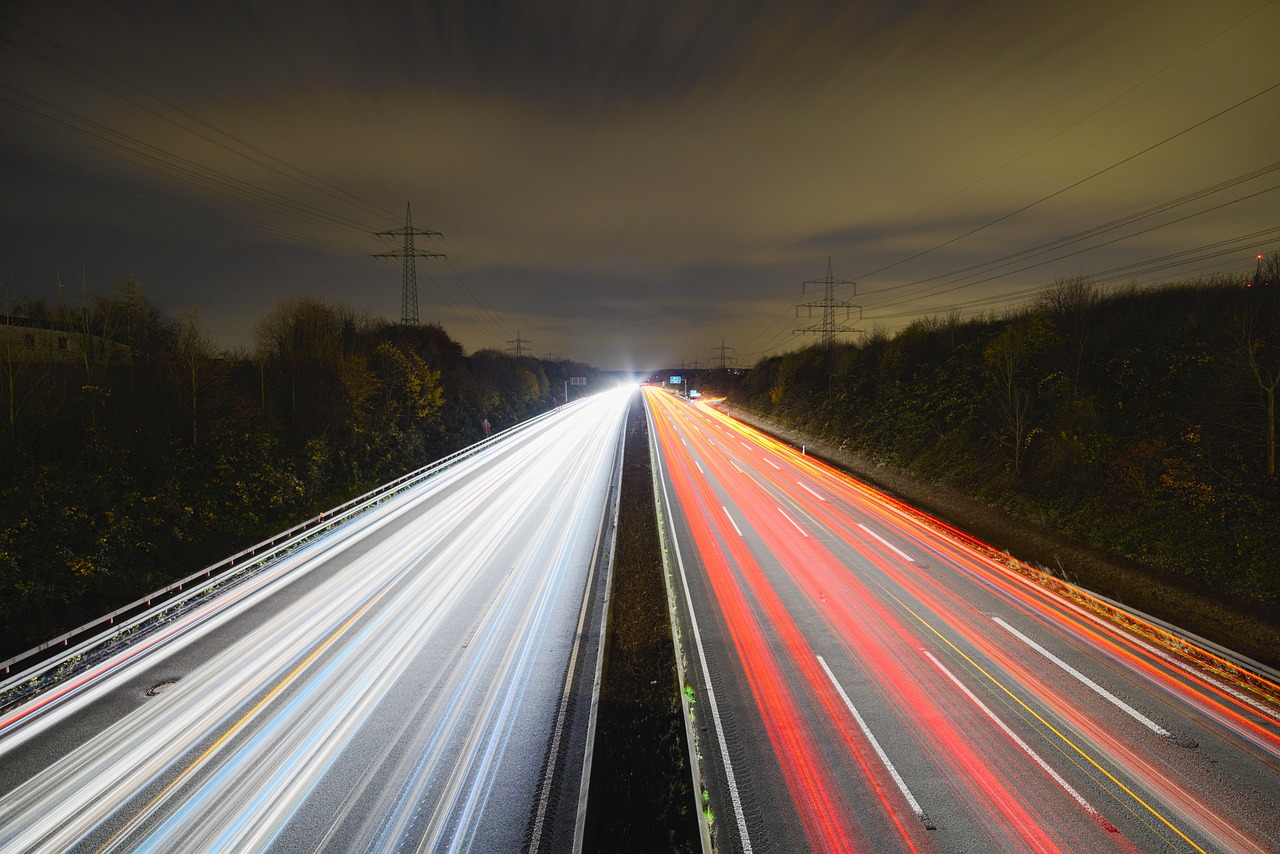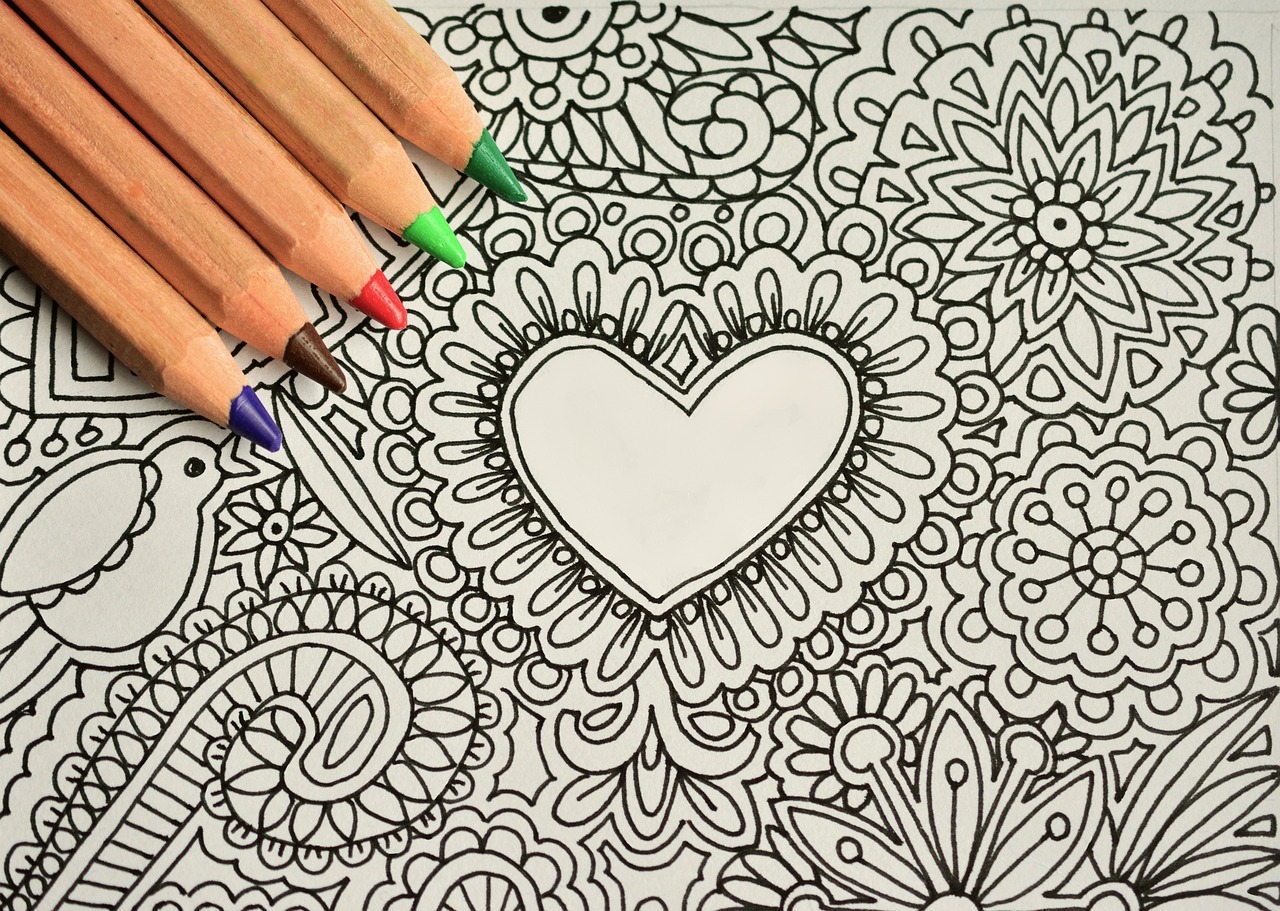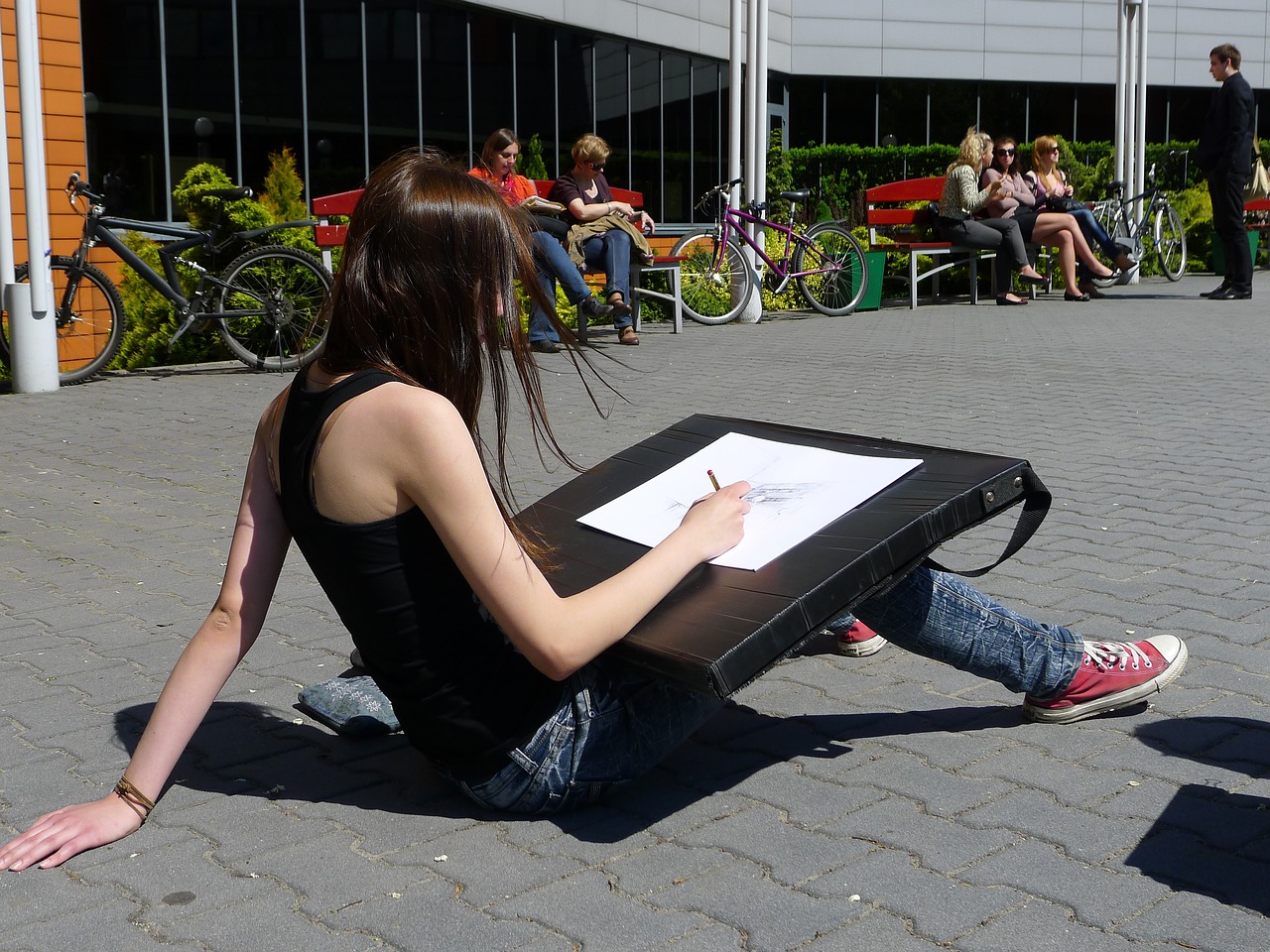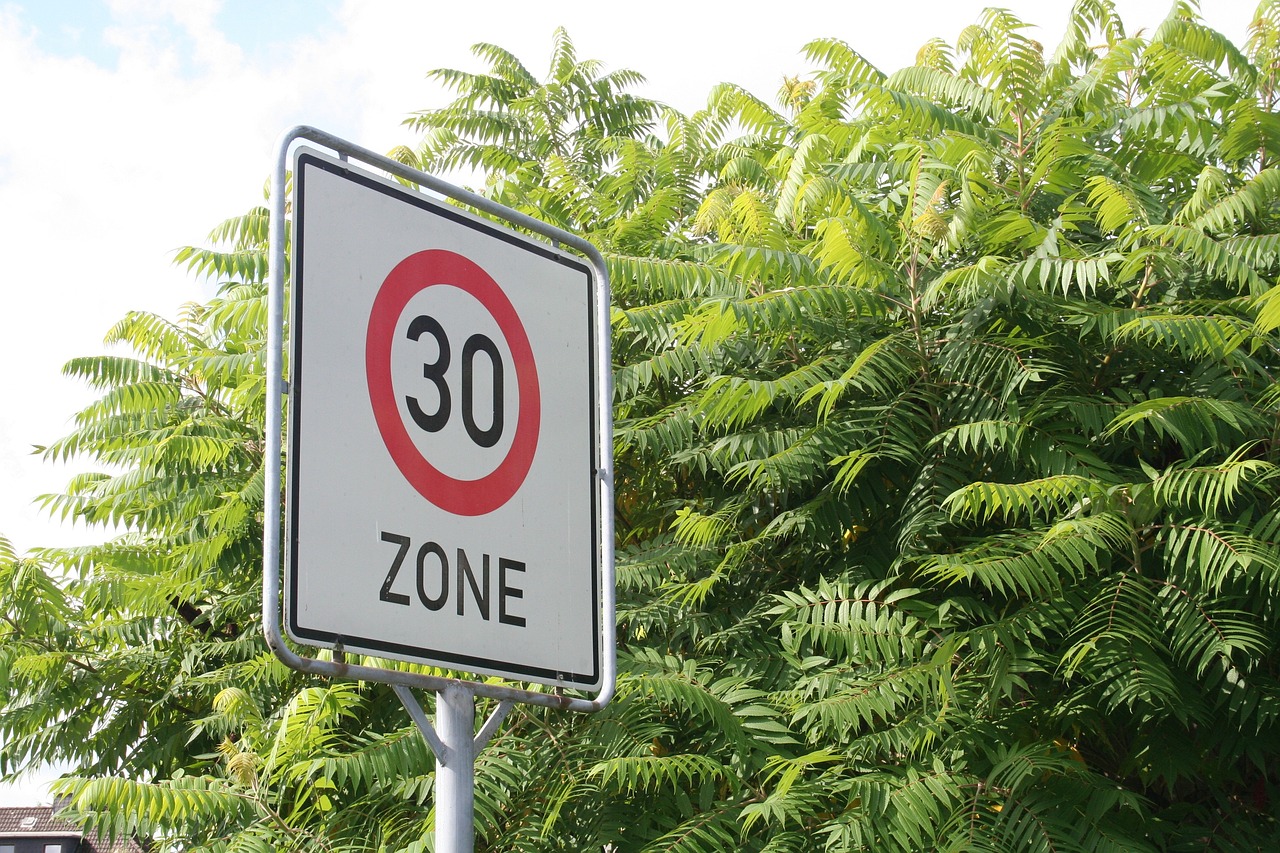Mastering the Art of Speed Drawing
Speed drawing is an exhilarating journey that combines the thrill of rapid creation with the discipline of artistic technique. Imagine standing at the edge of a cliff, ready to leap into the vast ocean of creativity, where every stroke of your pencil is a splash of color against the canvas of time. In this fast-paced world, where every second counts, mastering speed drawing allows artists to express their ideas quickly and efficiently. But what exactly does it mean to be a speed drawer? It’s not just about hastily putting pencil to paper; it’s about capturing the essence of your subject in a fraction of the time it would normally take.
At its core, speed drawing is a skill that requires practice, intuition, and a bit of daring. It’s like learning to dance; the more you practice, the more natural it becomes. You start to feel the rhythm of your strokes, and before you know it, you’re creating dynamic sketches that tell a story, all while the clock ticks away. This article will guide you through the various techniques, tools, and practices that can help you enhance your speed drawing abilities, making you not just a faster artist, but a more confident one.
So, why should you invest your time in speed drawing? Well, think of it as a workout for your artistic muscles. Just as athletes train to improve their performance, artists can benefit from honing their speed drawing skills. It helps you think on your feet, develop a keen eye for detail, and foster a deeper understanding of form and movement. Whether you're sketching a bustling cityscape or a serene landscape, speed drawing allows you to capture the fleeting moments that often go unnoticed.
As we delve deeper into this art form, you’ll discover essential techniques and tools that will not only enhance your speed but also elevate the quality of your work. From setting time limits to analyzing your progress, each section of this article is designed to equip you with the knowledge and skills needed to become a master of speed drawing. Ready to dive in? Let’s get started on this exciting artistic adventure!
Understanding the basic principles of speed drawing is essential for developing a strong foundation. This section covers key concepts that will streamline your drawing process and improve your overall efficiency.
Choosing the right tools can significantly impact your speed drawing experience. This section discusses various materials that can enhance your speed and the importance of having the right equipment.
Mastering specific techniques can help you draw quickly and effectively. This section highlights various methods that artists can employ to improve their speed and accuracy during the sketching process.
Regular practice is crucial for mastering speed drawing. This section provides tips on how to create a consistent practice routine that will help you build speed and confidence in your drawing abilities.
Implementing time constraints can boost your drawing speed. This section explores the benefits of timed drawing sessions and how they can help you develop a sense of urgency in your work.
Evaluating your drawings is vital for improvement. This section discusses how to assess your speed drawing skills and identify areas that need enhancement for better performance.
Integrating speed drawing into your artistic routine can enhance productivity. This section outlines strategies for making speed drawing a regular part of your creative process.
Inspiration plays a crucial role in the creative process. This section offers tips on where to find inspiration for your speed drawings, ensuring you stay motivated and engaged in your practice.
Q: What is speed drawing?
A: Speed drawing is the practice of creating sketches quickly, often within a set time limit, to capture the essence of a subject without getting bogged down in detail.
Q: How can I improve my speed drawing skills?
A: Regular practice, using the right tools, and implementing techniques like timed sessions can significantly enhance your speed drawing abilities.
Q: Do I need special tools for speed drawing?
A: While you can use any drawing tool, having materials that allow for quick application, like markers or digital tools, can improve your speed and efficiency.
Q: Is speed drawing only for experienced artists?
A: Not at all! Speed drawing can benefit artists of all levels. It’s a great way to practice and improve your skills, regardless of your experience.

The Fundamentals of Speed Drawing
Understanding the basic principles of speed drawing is essential for developing a strong foundation. At its core, speed drawing is about capturing the essence of a subject quickly and efficiently, rather than getting bogged down in details. Think of it as a sprint versus a marathon; while the marathon is about endurance, the sprint is all about speed and precision. The key is to train your brain and hand to work in harmony, allowing you to create dynamic sketches in minimal time.
One of the foundational concepts in speed drawing is the importance of gesture drawing. This technique focuses on the movement and posture of the subject rather than the intricate details. By practicing gesture drawing, you can quickly convey the energy and motion of your subject. Imagine you're trying to catch a fleeting moment—a dancer mid-leap or a dog chasing a squirrel. The goal is to capture that moment before it slips away, which requires a keen eye and quick hand.
Another fundamental aspect is understanding proportions and shapes. When you’re speed drawing, breaking down your subject into simple shapes can significantly streamline your process. For example, instead of trying to draw a complex human figure all at once, start with basic shapes like circles for the head and rectangles for the torso. This method allows you to establish proportions quickly and makes it easier to refine your drawing as you go along. Remember, every masterpiece begins with a simple sketch!
Additionally, it’s crucial to develop a visual library. This means familiarizing yourself with various subjects, poses, and scenes so that you can draw them from memory. The more you practice, the more your brain will store these images, making it easier to pull them out when you need to sketch quickly. Think of it as building a toolbox filled with handy tools that you can reach for anytime you need to create something new.
Lastly, don’t underestimate the power of observation. Speed drawing is not just about speed; it’s also about seeing. Train your eyes to notice the small details that define your subject. Whether it’s the way light falls on a face or the subtle curve of a tree branch, being observant can greatly enhance your ability to draw quickly and accurately. Consider keeping a sketchbook handy to jot down quick sketches of things you observe in your daily life. This practice will sharpen your skills and help you become more adept at capturing the world around you.
In summary, mastering the fundamentals of speed drawing involves a combination of gesture drawing, understanding shapes and proportions, building a visual library, and honing your observation skills. These principles will not only enhance your speed but also improve the quality of your sketches. So grab your pencil, embrace the spontaneity of speed drawing, and let your creativity flow!

Essential Tools and Materials
When it comes to speed drawing, the right tools and materials can make all the difference. Think of your drawing tools as your trusty sidekicks; they should enhance your skills and help you capture your ideas swiftly and effectively. Whether you’re a seasoned artist or just starting out, investing in quality materials can elevate your work. So, what should you have in your arsenal?
First and foremost, sketchbooks are a must-have. Look for ones that have a smooth texture, allowing your pencil or pen to glide effortlessly across the pages. The size of your sketchbook matters too; a portable option means you can practice speed drawing anywhere, from a bustling café to a serene park. Imagine being able to whip out your sketchbook and capture the essence of a moment in just a few strokes!
Next up are drawing tools. Pencils, pens, and markers each serve their unique purpose. For speed drawing, consider using mechanical pencils for their consistent lines and no need for sharpening, or brush pens that can create bold strokes with minimal pressure. You might also want to experiment with digital tools if you’re inclined towards digital art. Tablets and styluses can provide a seamless experience that allows for quick edits and adjustments.
In addition to tools, color mediums can add vibrancy to your sketches. Markers and colored pencils are fantastic for quick color application, while watercolors can offer a fluid, dynamic touch to your work. However, when speed is of the essence, you might prefer mediums that dry quickly to avoid smudging. This is where alcohol-based markers shine, as they dry almost instantly, allowing you to layer colors without the wait.
Don’t forget about erasers. A good eraser can save the day when you need to make corrections quickly. Opt for a kneaded eraser for its versatility; it can be shaped to fit into tight spaces and lifts graphite without damaging the paper. Combine this with a blending stump for smooth transitions in your sketches, and you’ll have a setup that promotes speed and efficiency.
Finally, organizing your workspace can significantly impact your speed drawing sessions. Having a dedicated area with all your tools within arm's reach minimizes distractions and allows you to focus on your creativity. Consider using a caddy or drawer to keep your materials sorted. You could even create a checklist of essential tools to ensure you’re always prepared before starting a drawing session.
In summary, the right tools and materials can streamline your speed drawing process, making it easier and more enjoyable. Invest in quality sketchbooks, drawing tools, color mediums, and organizational solutions to enhance your artistic journey. Remember, your tools are your allies—choose wisely, and they will help you unleash your creativity!
Q: What is the best sketchbook for speed drawing?
A: Look for a sketchbook with smooth, high-quality paper that can handle various mediums. Size is also important; a portable option is great for on-the-go drawing.
Q: Can I use digital tools for speed drawing?
A: Absolutely! Digital tools like tablets and styluses can provide a fast and flexible drawing experience, allowing for quick edits and layers.
Q: What type of pencil is best for speed drawing?
A: Mechanical pencils are popular for their consistent line quality and no need for sharpening, which can save you time.
Q: How often should I practice speed drawing?
A: Regular practice is key! Try to set aside time each week to focus on speed drawing to build your skills and confidence.

Techniques for Fast Sketching
When it comes to speed drawing, mastering specific techniques can be a game changer. Think of it like learning to ride a bike; once you get the hang of it, you can zoom past your initial wobbles. Speed sketching is all about practice and developing a rhythm that allows your hand to move fluidly across the page. One of the most effective techniques is the gesture drawing. This involves quickly capturing the essence of a subject with loose, flowing lines. Instead of getting bogged down with details, focus on the overall form and movement. This technique not only warms you up but also helps in understanding the anatomy and proportions of your subjects.
Another essential technique is blocking in shapes. Start by identifying the basic geometric shapes that make up your subject. For instance, a human figure can be broken down into circles, ovals, and rectangles. Once you establish these shapes, you can refine them into a more detailed drawing. This approach not only speeds up the process but also ensures that your proportions are accurate from the beginning. It’s like building a house; you wouldn’t start with the roof before laying the foundation!
In addition to these techniques, consider practicing contour drawing. This involves drawing the outline of a subject without lifting your pencil from the paper. It forces you to focus on the shape and flow of the subject rather than getting lost in details. The key here is to keep your eyes on the subject and let your hand follow, creating a continuous line that captures the essence of what you see.
Moreover, speed drills can be incredibly effective. Set a timer for 1 to 5 minutes and challenge yourself to complete as many sketches as possible within that time frame. This not only enhances your speed but also helps in making quick decisions about what to include in your drawings. You might be surprised at how much you can capture in just a few minutes! Here’s a quick breakdown of a simple speed drill routine:
| Time Limit | Activity | Focus |
|---|---|---|
| 1 Minute | Gesture drawing | Overall movement and pose |
| 3 Minutes | Contour drawing | Shape and outline |
| 5 Minutes | Blocking in shapes | Proportions and structure |
Don't forget the importance of reference materials. Having a variety of images or objects to draw from can significantly speed up the process. Instead of staring at a blank page, look for inspiration in your surroundings or online. This can also include using photo references for practice, which can help you make quicker decisions about your sketches. The more you expose yourself to different subjects, the more confident you’ll become in your ability to draw them quickly.
Lastly, remember to keep your mindset positive. Speed drawing can sometimes feel daunting, especially when you’re trying to improve. Embrace the process, and don’t be too hard on yourself. Every sketch is a step forward, so celebrate your progress and enjoy the journey. After all, the goal is to express yourself and have fun while honing your skills!
- What is speed drawing? Speed drawing is the practice of creating sketches quickly, focusing on capturing the essence of the subject rather than getting lost in details.
- How can I improve my speed drawing skills? Regular practice, using techniques like gesture drawing and blocking in shapes, and setting time limits for your sketches can help improve your skills.
- Do I need special tools for speed drawing? While you can use any drawing tool, having a sketchbook and pencils that you are comfortable with can enhance your experience.
- How often should I practice speed drawing? Consistency is key! Aim to practice a few times a week to see significant improvements over time.

Practicing Speed Drawing
When it comes to mastering speed drawing, the phrase "practice makes perfect" couldn’t be more accurate. Just like a musician needs to practice scales, or an athlete needs to hit the gym, artists must dedicate time to honing their speed drawing skills. But how do you create an effective practice routine that doesn’t feel like a chore? It’s all about finding a balance between discipline and enjoyment.
First and foremost, consistency is key. Aim to set aside a specific time each day for practice. This doesn’t have to be a long session; even 15-30 minutes daily can lead to significant improvements over time. Think of it like watering a plant; regular attention leads to growth. You might want to start with simple warm-up exercises, like drawing basic shapes or lines, to get your hand accustomed to moving quickly across the page.
Next, consider incorporating a variety of subjects into your practice. This could include still life setups, quick portraits, or even drawing from photographs. The more diverse your practice, the better equipped you’ll be to handle different challenges. A great way to keep things fresh is to create a weekly theme for your drawings. For example, one week could focus on animals, while another could be dedicated to landscapes. This approach not only enhances your skills but also keeps your creative juices flowing.
Another effective method is to use timed drawing challenges. Set a timer for one, three, or five minutes, and challenge yourself to complete a drawing within that time frame. This technique not only builds speed but also encourages you to focus on capturing the essence of your subject rather than getting bogged down in details. You might be surprised at what you can achieve when the clock is ticking!
Moreover, don't forget to take breaks. It might sound counterintuitive, but stepping away for a few minutes can actually enhance your productivity and creativity. During these breaks, consider reviewing your previous sketches. Analyze what worked and what didn’t. This self-reflection is crucial for growth; it’s like having a coach guiding you through your artistic journey.
To further enrich your practice, you could join online communities or local art groups where speed drawing is encouraged. Sharing your work and receiving feedback can be incredibly motivating. Plus, you’ll find that many artists are eager to share their own tips and tricks, which can help you discover new techniques to incorporate into your routine.
Lastly, keep a sketchbook dedicated solely to speed drawing. This will not only serve as a record of your progress but also as a source of inspiration for future projects. As you flip through the pages, you’ll see how far you’ve come, and that can be a huge confidence booster.
In summary, practicing speed drawing is all about consistency, variety, and self-reflection. By setting aside dedicated time, experimenting with different subjects, and engaging with fellow artists, you’ll find yourself improving faster than you ever thought possible. So grab your sketchbook, set that timer, and let your creativity flow!
- How long should I practice speed drawing each day? Ideally, aim for at least 15-30 minutes daily to see consistent improvement.
- What subjects should I focus on for speed drawing? Try a variety of subjects, including still life, portraits, and landscapes to diversify your skills.
- How can I stay motivated during practice? Set weekly themes, join art communities, and keep a dedicated sketchbook to track your progress.

Setting Time Limits
When it comes to speed drawing, one of the most effective strategies you can employ is . Imagine you're in a race; the clock is ticking, and every second counts. This sense of urgency can ignite your creativity and push you to produce work that is both spontaneous and dynamic. The idea is simple: by giving yourself a specific timeframe to complete a drawing, you can enhance your focus and efficiency, leading to quicker decision-making and more instinctive strokes. But how do you implement this technique effectively?
First, consider starting with shorter time limits. For instance, you might begin with a 5-minute sketch. This brief window forces you to prioritize what’s truly important in your drawing. Are you capturing the essence of your subject? Are your lines confident? As you become more comfortable with shorter sessions, gradually increase the time to 10 or 15 minutes, allowing for more detail while still maintaining a brisk pace. This progressive approach helps you build both speed and confidence without feeling overwhelmed.
Another essential aspect of setting time limits is to create an environment that minimizes distractions. Turn off your phone notifications, find a quiet space, and let your mind focus solely on the task at hand. You might even want to use a timer—there’s something exhilarating about hearing that ticking sound, urging you to keep moving. Additionally, you can track your progress over time. Here’s a simple table to visualize your improvements:
| Session Date | Time Limit | Sketch Quality (1-10) | Notes |
|---|---|---|---|
| 2023-10-01 | 5 minutes | 6 | Need to focus on proportions. |
| 2023-10-05 | 10 minutes | 7 | Improved line quality. |
| 2023-10-10 | 15 minutes | 8 | Felt more relaxed and confident. |
Moreover, consider varying your time limits based on the complexity of the subject. For simpler subjects, you might opt for a 3-minute limit, while more intricate pieces could warrant 20 minutes. This flexibility keeps your practice fresh and engaging, preventing monotony. And remember, the goal isn’t perfection; it’s about capturing the essence of your subject quickly and effectively.
Lastly, don't shy away from sharing your timed sketches with others. Whether it’s through social media or local art groups, showcasing your work not only provides motivation but also invites constructive feedback. Engaging with a community can inspire you to push your boundaries further, making the whole process more enjoyable.
In summary, setting time limits can significantly enhance your speed drawing skills. By creating a structured yet flexible practice routine, you’ll find yourself improving in both speed and creativity. So, grab your tools, set that timer, and let the magic happen!
- How long should my time limits be? Start with 5 minutes and gradually increase as you become more comfortable.
- What if I can't finish a drawing in the set time? That's okay! The goal is to practice speed, not perfection. Focus on capturing the essence.
- Can I use a reference image? Absolutely! Reference images can help you stay on track while practicing speed.
- How often should I practice speed drawing? Aim for at least a few times a week to see significant improvements.

Analyzing Your Progress
When it comes to speed drawing, is like holding up a mirror to your artistic journey. Have you ever felt that your sketches aren’t improving, or that you’re stuck in a creative rut? Well, taking a step back to evaluate your work can provide you with the insights needed to break through those barriers. Just as an athlete reviews their performance to enhance their skills, artists too must scrutinize their drawings to identify strengths and weaknesses.
Start by gathering a collection of your speed drawings over a specific period. This could range from a week to several months, depending on how serious you are about tracking your progress. Once you have this collection, lay them out side by side. You might be surprised to see how much your style has evolved, even if it feels gradual day by day. Look for patterns in your work. Are there specific elements that consistently need improvement? Maybe it's the way you capture proportions, or perhaps your shading techniques need refinement. Understanding these patterns can help you focus your practice sessions more effectively.
To facilitate this analysis, consider creating a simple
| Date | Subject | Time Taken | Self-Assessment | Areas for Improvement |
|---|---|---|---|---|
| 01/01/2023 | Landscape | 15 mins | Good | Line quality |
| 01/05/2023 | Portrait | 20 mins | Average | Proportions |
| 01/10/2023 | Animal | 10 mins | Excellent | Speed |
This table not only serves as a record of your work but also helps you visualize your progress over time. After filling it out, take a moment to reflect on the trends you observe. Are you improving in certain areas while struggling in others? This reflection is crucial because it allows you to tailor your future practice sessions to address these specific challenges.
Additionally, don’t shy away from seeking feedback from fellow artists or mentors. Sometimes an outside perspective can highlight aspects of your work that you might overlook. Constructive criticism can be a powerful tool for growth. Consider joining online communities or local art groups where you can share your work and receive valuable insights.
Lastly, remember that progress in art is not always linear. There will be days when you feel like you’re moving backward rather than forward. Embrace these moments as part of the journey. By consistently analyzing your progress and adjusting your approach, you’ll find that your skills will continue to evolve, leading to more dynamic and expressive speed drawings.
- How often should I analyze my speed drawing progress? It's beneficial to review your work every few weeks or after completing a significant number of drawings. This allows you to see improvements over time.
- What should I focus on when analyzing my drawings? Look for patterns in your work, areas where you struggle, and overall improvement in technique and speed.
- Can I use digital tools to analyze my progress? Absolutely! Many digital art programs allow you to track changes over time, making it easier to see your evolution as an artist.

Incorporating Speed Drawing into Your Workflow
Integrating speed drawing into your daily routine can be a game-changer for your artistic journey. Think of it as adding a turbo boost to your creative engine! By making speed drawing a regular practice, you not only enhance your skills but also cultivate a habit that encourages spontaneity and innovation in your art. So, how can you seamlessly weave speed drawing into your workflow? Let’s explore some strategies that can help you achieve this.
First and foremost, dedicate specific time slots in your schedule for speed drawing sessions. Just like any other appointment, treat these sessions with respect and commitment. You might find it helpful to set aside 15 to 30 minutes each day where you can focus solely on creating quick sketches. This can be during your morning coffee break, lunch hour, or even in the evening when you unwind. The key is consistency—over time, these sessions will become a natural part of your artistic routine.
Another effective method is to incorporate speed drawing into your existing projects. If you’re working on a larger piece, try starting with a speed drawing session to brainstorm ideas or explore different compositions. This way, you’re not only warming up your hand but also gathering valuable insights that can inform your main artwork. It’s like sketching your way to a masterpiece!
Furthermore, consider joining online challenges or local meet-ups that focus on speed drawing. Participating in these events can provide a sense of community and accountability. You’ll be surrounded by fellow artists who share your passion, and the competitive element can push you to draw faster and more creatively. Plus, sharing your progress on social media can keep you motivated and inspire others!
To keep things fresh and exciting, try varying your subjects and styles during your speed drawing sessions. One day, you might focus on animals, while the next day could be all about landscapes or even abstract forms. This variety not only prevents burnout but also challenges you to adapt and think quickly, honing your skills in diverse areas. Remember, the goal is to keep your creativity flowing!
Lastly, don’t forget to reflect on your speed drawing sessions. After each practice, take a moment to analyze what worked and what didn’t. Are there specific techniques that helped you draw faster? Were there any distractions that slowed you down? Keeping a sketchbook or a digital journal can be beneficial for tracking your progress and identifying patterns in your growth. It’s all about learning and evolving as an artist.
In conclusion, incorporating speed drawing into your workflow is about creating a balance between practice and exploration. By dedicating time, embracing community, varying your subjects, and reflecting on your work, you’ll not only enhance your speed drawing skills but also enrich your overall artistic experience. So grab your sketchbook, set that timer, and let your creativity soar!
- What is speed drawing? Speed drawing is the practice of creating sketches in a limited amount of time, often focusing on capturing the essence of a subject rather than intricate details.
- How long should my speed drawing sessions be? Sessions can vary, but starting with 15 to 30 minutes is a great way to build the habit without feeling overwhelmed.
- Can speed drawing improve my overall skills? Absolutely! Speed drawing encourages you to make quick decisions, enhances your observation skills, and improves your ability to capture movement and form.
- What tools should I use for speed drawing? Simple tools like pencils, pens, or digital drawing tablets work well. The key is to choose materials that you are comfortable with and that allow for quick execution.

Finding Inspiration for Speed Drawing
Finding inspiration for speed drawing can often feel like searching for a needle in a haystack, especially when you're racing against the clock. But fear not! Inspiration is all around you, and tapping into it can transform your sketches from mundane to magnificent in no time. Think of inspiration as the fuel that powers your creative engine; without it, you might find yourself stalling on the side of the artistic highway.
One of the most effective ways to ignite your creativity is to immerse yourself in the world around you. Nature, urban landscapes, or even the bustling activity of a café can provide a treasure trove of ideas. For instance, observe the way light interacts with objects or how people express emotion through body language. These observations can lead to dynamic sketches that capture the essence of your surroundings. Remember, speed drawing is not just about the speed; it’s about conveying a story or a feeling in a brief moment.
Another fantastic source of inspiration can be found in art challenges and prompts. Websites and social media platforms often host monthly or weekly drawing challenges that encourage artists to explore new themes or techniques. Participating in these challenges can push you out of your comfort zone and spark creativity. You might find that a simple prompt, like “draw your favorite food” or “sketch a mythical creature,” can lead to surprising and delightful results.
Additionally, consider keeping an inspiration journal. This can be a simple sketchbook where you jot down ideas, doodle, or paste images that resonate with you. Over time, this journal becomes a personal database of inspiration. When you sit down for a speed drawing session, flipping through the pages can reignite those creative sparks and help you jump right into your work.
Don’t forget the power of community! Engaging with fellow artists can provide fresh perspectives and ideas. Join online forums, attend local art meetups, or participate in social media groups dedicated to speed drawing. Sharing your work and receiving feedback can be incredibly motivating. You might even find a drawing buddy to challenge each other, which can lead to exciting collaborations and new techniques.
Lastly, always remember to embrace the unexpected. Sometimes, inspiration strikes when you least expect it. It could be a fleeting moment during your daily commute or an interesting shape in the clouds. Keep a small sketchbook or your phone handy to capture these moments. The more you practice recognizing and seizing these inspirations, the more your speed drawing sessions will come alive with energy and creativity.
Q: How can I find inspiration quickly before a speed drawing session?
A: A quick way to find inspiration is to browse through art websites, social media platforms, or even your own inspiration journal. You can also set a timer for a few minutes and do a quick sketch of whatever catches your eye around you.
Q: Are there specific themes I should focus on for speed drawing?
A: While there are no strict themes, experimenting with different subjects like landscapes, portraits, or abstract forms can keep your practice fresh and exciting. Try themes that challenge your skills or spark your interest.
Q: How can I stay motivated to keep practicing speed drawing?
A: Setting personal goals, participating in art challenges, and connecting with other artists can boost your motivation. Celebrate small victories and progress, and remember that every sketch is a step towards improvement.
Frequently Asked Questions
- What is speed drawing?
Speed drawing is a technique where artists create sketches in a limited amount of time. It's all about capturing the essence and form of the subject quickly, which helps improve both speed and efficiency in drawing.
- Do I need special tools for speed drawing?
While you don't need anything fancy, having the right tools can make a difference. Pencils, markers, or digital tablets that you're comfortable with can enhance your experience. The key is to use materials that allow you to work quickly without hindrance.
- How can I practice speed drawing effectively?
Start with short sessions, gradually increasing the time as you get comfortable. Set a timer, and challenge yourself to complete sketches within that time frame. Consistency is key, so try to incorporate speed drawing into your routine regularly.
- What techniques can help improve my speed drawing skills?
Techniques like gesture drawing, using simple shapes to outline subjects, and focusing on key details rather than perfection can significantly enhance your speed. Practice these methods to find what works best for you!
- Why should I set time limits for my drawings?
Setting time limits creates a sense of urgency that can boost your drawing speed. It forces you to make quick decisions and helps you prioritize what’s essential in your sketch, ultimately improving your efficiency.
- How do I know if I’m improving in speed drawing?
Track your progress by keeping a sketchbook dedicated to speed drawing. Review your earlier sketches to see how much faster and more accurately you can draw now. It's like looking back at your old photos and realizing how far you've come!
- Can speed drawing fit into my regular art practice?
Absolutely! Incorporating speed drawing into your routine can enhance your overall productivity. You can use it as a warm-up exercise or a way to brainstorm ideas quickly, making it a valuable addition to your artistic workflow.
- Where can I find inspiration for speed drawing?
Inspiration can come from anywhere! Look at your surroundings, browse online art communities, or even use reference images. The key is to stay curious and open to new ideas, which will keep your practice fresh and exciting.



















